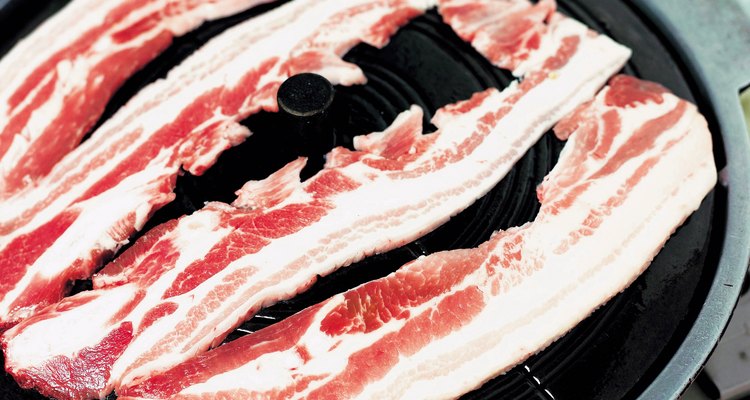
The tenderloin, also called a backstrap, is the most tender and often most desirable cut from a deer, but given its lean quality, it can become dry when cooked. Bacon wrapped around the tenderloin provides fat to baste the meat while cooking so it stays juicy and tender. One of the biggest aversions to deer meat is its gamey flavor, which intensifies depending on the diet and the way the meat is dressed. You can eliminate much of that gamey flavor so it doesn't overpower the bacon and the lean, tender qualities of the tenderloin.
Step 1
Trim any excess fat from the outside of the tenderloin and soak the meat in an acidic liquid for at least 1 hour to help eliminate some of the gamey flavor. Try using buttermilk or a solution of 2 tablespoons of white vinegar to 1 quart of water.
Step 2
Marinate your tenderloin overnight, if desired, to boost the flavor and help tenderize the meat. In addition to bottled marinades available at your grocery store, common marinades include Italian dressing, tomato juice, citrus fruit juice or a mixture of equal parts white vinegar and water mixed with your choice of spices. Allow the excess marinade to drip off the tenderloin when you're ready to start cooking, and discard all marinade; do not cook the meat in the marinade or add the marinade to the meat after it's cooked.
Step 3
Wrap one strip of bacon around the tenderloin, starting at one end of the tenderloin. Leave about half the width of the bacon strip extending over the edge of the meat. It will line up with the end of the tenderloin as it shrinks in the cooking process. The ends of the bacon should overlap. Insert a toothpick through the bacon ends and into the tenderloin to hold it in place.
Step 4
Wrap a second piece of bacon around the tenderloin with it overlapping the first bacon slice by one-fourth to one-half to account for shrinkage as the bacon cooks. Insert a toothpick to hold the bacon in place. Repeat this process until the entire length of the tenderloin is covered. Sprinkle the bacon with a bit of pepper or your choice of spices, if desired.
Step 5
Preheat an oven-safe skillet on the stovetop over medium-high heat. Preheat your oven to about 375 degrees Fahrenheit.
Step 6
Add the tenderloin to the skillet and cook it for 2 to 3 minutes on each side to brown the bacon. Turn the tenderloin with a pair of tongs to avoid piercing the meat. If the toothpicks are pushed well into the tenderloin, you shouldn't have any problems with the toothpicks protruding out the meat and scraping the pan.
Step 7
Transfer the skillet to the oven and bake for 25 to 30 minutes, or until the internal temperature of the tenderloin roast reaches a minimum of 150 F. Insert an instant-read digital meat thermometer in the thickest part of the roast to check. If you don't have an oven-safe skillet, transfer the roast to a baking pan for the remaining cook time.
Step 8
Remove the roast from the hot pan to a serving plate and allow it to rest for about 10 minutes. The resting period allows time for the juices to redistribute throughout the meat and the temperature to rise about 10 degrees to 160 F, the safe temperature to kill parasites and bacteria that can be present in the meat. Check the temperature after the resting period and return the meat to the oven if the temperature doesn't rise adequately.
Related Articles
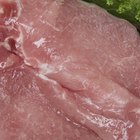
How to Cook Boneless Country Spare Ribs
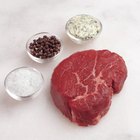
How to Sear Tenderloin Steak and Cook ...

How to Cook Pan Fried Deer Tenderloin
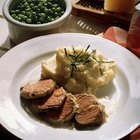
How to Make a Juicy Pork Tenderloin
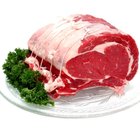
How to Marinate a Top Round Roast
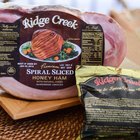
Cooking Instructions for a Ridge Creek ...

How to Cook Pancetta
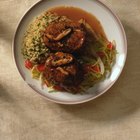
How to Broil Filet Mignon Wrapped in ...
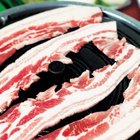
How to Know if Bacon Has Gone Bad
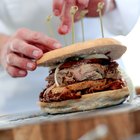
How to Convection Roast a Brisket
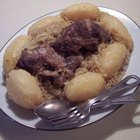
How to Cook a Boneless Sirloin Pork ...
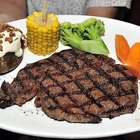
How to Cook Angus Beef Steak

How to Cook Texas Broil Roast

Easy Ways to Cook Pork Steak

How to Cook Pork Hamonado
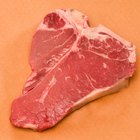
How to Score a Steak
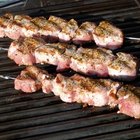
How to Cook Pork Loin
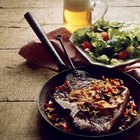
How to Pan Cook a Sirloin to Medium-Well
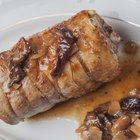
How to Slow-Cook Peameal Bacon

How to Trim and Tie a Beef Tenderloin
References
Tips
- Remove the toothpicks before serving the roasts or inform the guests that toothpicks are present inside the meat.
- Actual cooking time varies depending on the thickness and weight of the deer tenderloin, and even when cooked well done, the meat can have a pink color. Rely on a meat thermometer for doneness rather than a time chart or meat color.
- While you might prefer very lean bacon for breakfast, bacon with a higher fat content is an advantage here because the fat bastes the lean tenderloin and adds flavor.
Warnings
- The safe temperature for venison is 160 F, but many prefer to consume medium-rare venison with an internal temperature of 145 F. If you prefer rarer meat, freeze the roast for at least 24 hours before cooking as an alternative method for killing parasites and bacteria.
Writer Bio
A former cake decorator and competitive horticulturist, Amelia Allonsy is most at home in the kitchen or with her hands in the dirt. She received her Bachelor's degree from West Virginia University. Her work has been published in the San Francisco Chronicle and on other websites.
Photo Credits
Jupiterimages/Photos.com/Getty Images